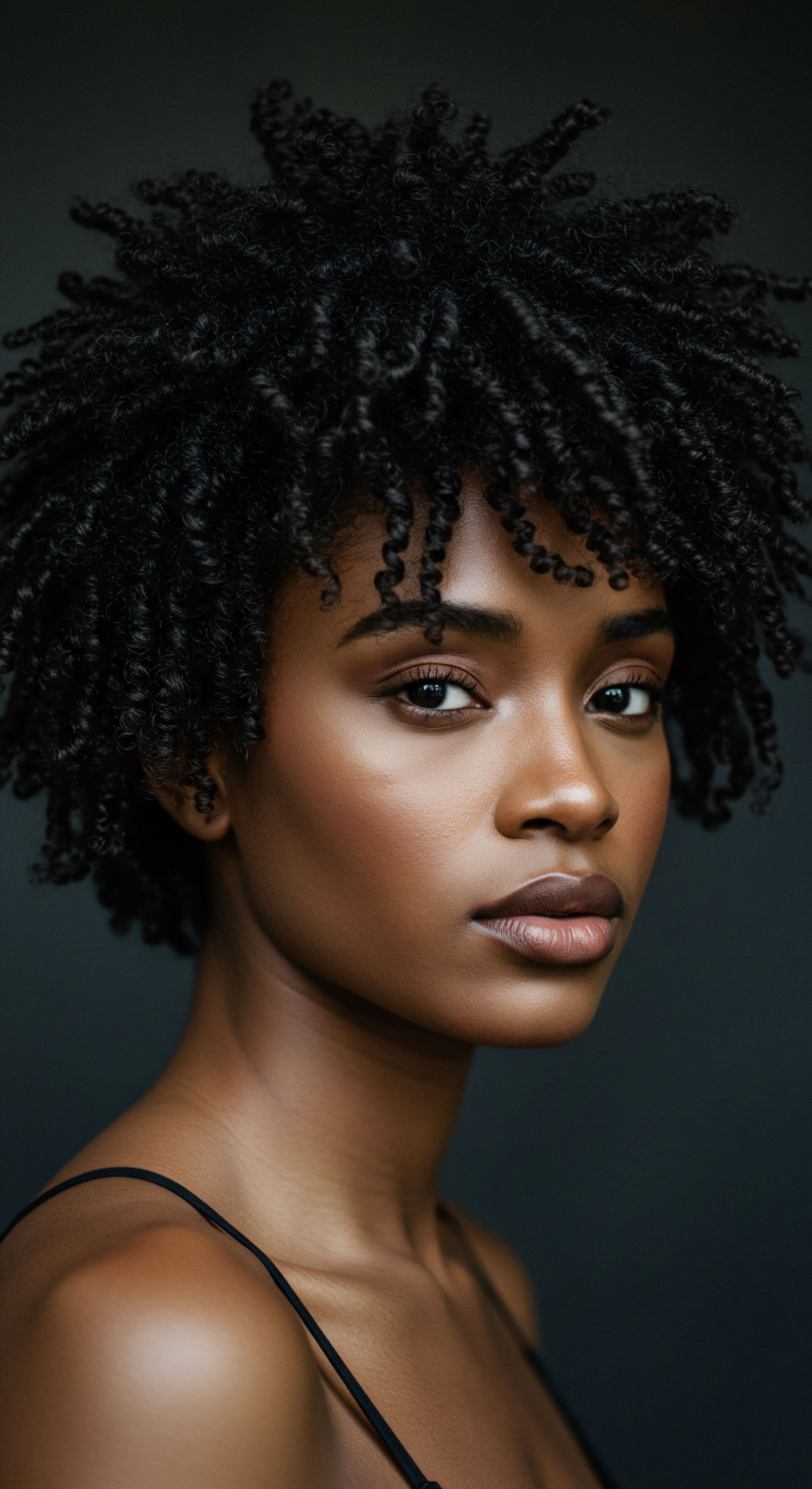
Roots
The quiet murmurs of society, often unseen yet deeply felt, ripple through the very strands that crown our heads. For many, hair is simply a biological marvel, a protective covering. Yet, for others, particularly those with textured hair, it holds a mirror to identity, a canvas for expression, and sometimes, a site where the subtle yet potent pressures of the world leave their mark on one’s inner landscape.
How can something so seemingly external as hair become so intimately connected to our mental well-being? The answer lies in its foundational significance, both biologically and culturally, a story written across generations and deeply personal experiences.

Hair Anatomy and Physiology Specific to Textured Hair
To truly appreciate the delicate interplay between hair and our inner world, one must first comprehend the physical marvel that is textured hair. Unlike straight or wavy hair, coily and kinky strands possess a unique elliptical or flattened cross-section, which causes the hair shaft to twist and turn as it grows. This distinct helical shape contributes to its beautiful volume and resilience, yet also presents particular needs. The twists and turns create natural points of fragility, making textured hair more prone to dryness and breakage if not handled with mindful care.
The outer layer, the cuticle, with its shingle-like cells, tends to be more open in highly textured hair, allowing moisture to escape more readily. This inherent characteristic necessitates a different approach to hydration and protection, a dance with moisture that becomes central to its health.
Each individual strand emerges from a follicle, a tiny organ nestled within the scalp. The shape of this follicle largely determines the curl pattern. For those with tightly coiled hair, the follicle itself is often curved, causing the hair to grow in a spring-like manner. This growth pattern, combined with fewer cuticle layers and lower natural oil distribution along the shaft, means that external conditioning and sealing practices are not merely cosmetic choices but vital components of maintaining integrity and preventing environmental stressors from compromising the hair’s structure.

Textured Hair Classification Systems
The journey to understanding textured hair often begins with a classification system, a helpful guide to navigate its diverse expressions. While no single system captures the full spectrum of individual variation, popular charts often categorize hair into types, from loose waves to tight coils. These systems typically assign numbers and letters, such as 3A, 4B, or 4C, to describe curl tightness and pattern.
A Type 3 Curl might appear as a loose, defined spiral, while a Type 4 Coil could be a tight, Z-shaped zig-zag. These classifications offer a common language, a way to discuss specific needs and approaches, fostering a sense of community and shared understanding among those who once felt their hair was simply “different” or “difficult.”
It is important to remember that these classifications serve as descriptive tools, not prescriptive judgments. They highlight the incredible diversity within textured hair, inviting appreciation for each unique expression rather than imposing a hierarchy. The very act of naming and understanding these types can be a step towards self-acceptance, transforming what might have been perceived as a challenge into a celebrated characteristic.
Understanding the biological uniqueness of textured hair forms the basis for appreciating its distinct care needs and the personal narratives woven around it.
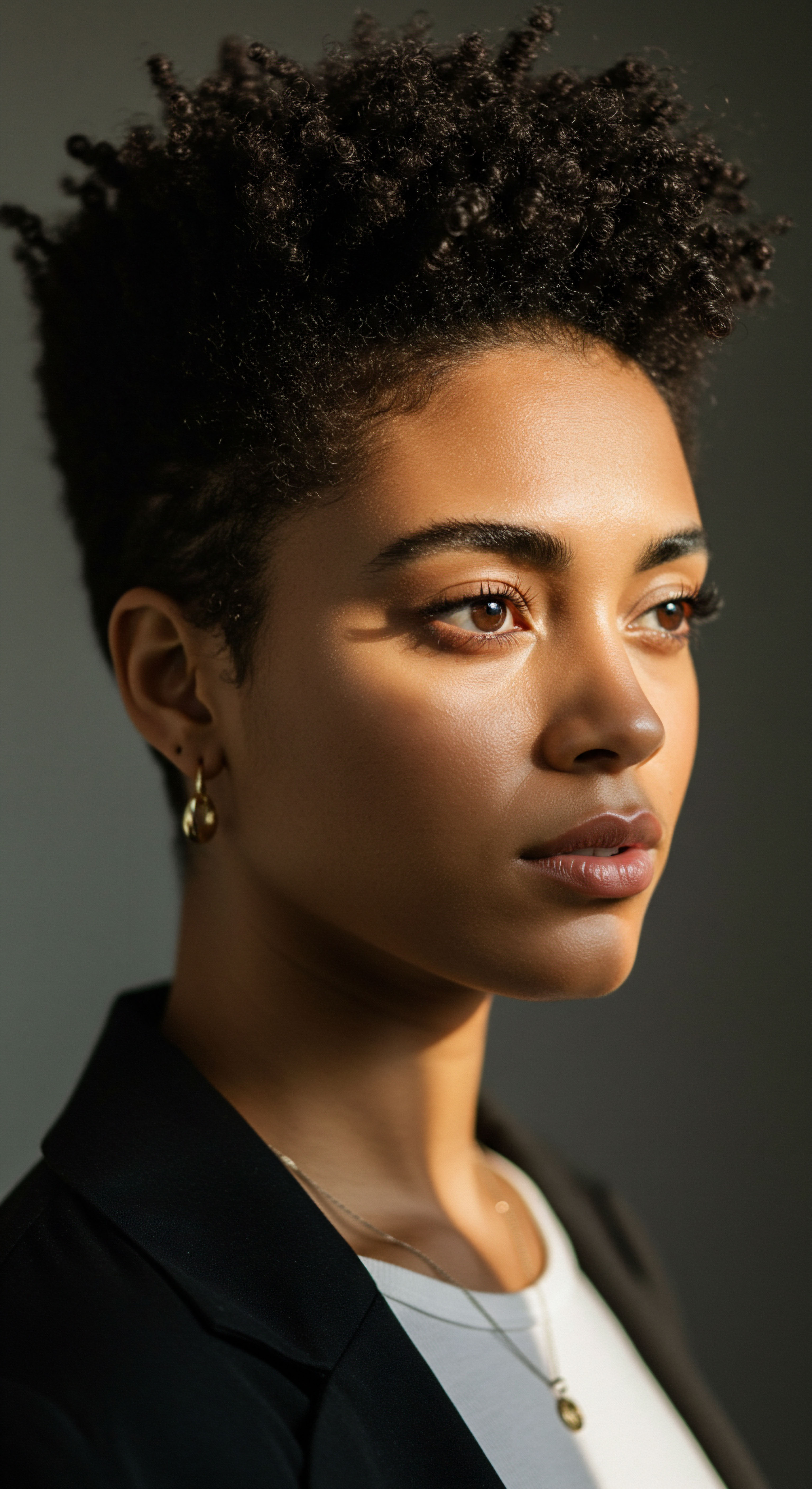
The Essential Lexicon of Textured Hair
Within the world of textured hair, a specific lexicon has blossomed, a language rich with terms that describe its nuances and care rituals. Words like Co-Wash, referring to conditioner-only washing, or LOC Method, an acronym for Liquid, Oil, Cream, illustrate specialized techniques designed to cater to its moisture requirements. Terms such as Shrinkage, the apparent reduction in length due to the curl pattern, and Definition, the clarity of individual curls, become part of a shared dialogue. This vocabulary goes beyond mere technicality; it creates a sense of belonging, allowing individuals to articulate their hair experiences with precision and find kinship with others who speak the same language of curls and coils.
This specialized language empowers individuals to advocate for their hair’s needs, whether in a salon setting or when selecting products. It represents a collective knowledge base, built from shared experiences and scientific insights, ensuring that care practices are aligned with the hair’s inherent structure rather than conforming to generalized beauty ideals.

Hair Growth Cycles and Influencing Factors
Hair growth follows a cyclical pattern, a continuous process of renewal and rest. Each follicle cycles through three main phases ❉ anagen (growth), catagen (transition), and telogen (resting). For most healthy hair, the anagen phase is the longest, lasting several years, allowing for significant length.
Textured hair, while following these same cycles, can sometimes experience a shorter anagen phase for certain individuals, which might influence perceived length retention. This natural variance is part of the hair’s biological rhythm.
Numerous factors can influence these cycles, from genetics and nutrition to stress and hormonal shifts. A balanced diet, rich in vitamins and minerals, supports healthy growth. Adequate hydration is also vital, reflecting in the hair’s vibrancy.
External factors, such as harsh chemical treatments or excessive heat, can disrupt these delicate cycles, leading to breakage or thinning. Understanding these underlying biological processes allows for a more informed and gentle approach to hair care, recognizing that hair health is a reflection of overall well-being.
| Curl Type Type 3A |
| Description Loose, buoyant curls |
| Typical Characteristics Large, well-defined spirals, often with a wider circumference. |
| Curl Type Type 3B |
| Description Springy, tighter curls |
| Typical Characteristics Bouncier, more compact spirals, can have more volume. |
| Curl Type Type 3C |
| Description Tightly packed corkscrews |
| Typical Characteristics Pencil-sized curls, very dense, prone to shrinkage. |
| Curl Type Type 4A |
| Description S-shaped coils |
| Typical Characteristics Defined S-pattern, often fine, can be tightly coiled. |
| Curl Type Type 4B |
| Description Z-shaped kinks |
| Typical Characteristics Sharp, angular bends, less defined curl pattern, can be cottony. |
| Curl Type Type 4C |
| Description Tightly coiled, undefined |
| Typical Characteristics Dense, very small zig-zag pattern, significant shrinkage, delicate. |

Ritual
As we move from the foundational understanding of textured hair, our thoughts naturally turn to the practices that honor its unique needs. Daily or periodic hair practices are not merely routines; they are rituals, acts of care that shape our experience of self and how we present to the world. For those with textured hair, these rituals hold particular weight, often serving as a quiet defiance against historical pressures, a reclaiming of beauty, and a tangible expression of self-regard. Stepping into this realm of practical wisdom invites a gentle guidance through the techniques and methods that truly allow textured hair to flourish.

Protective Styling Encyclopedia
Protective styles are cornerstones of textured hair care, offering a sanctuary for delicate strands from environmental stressors and daily manipulation. These styles tuck away the ends of the hair, which are the oldest and most fragile parts, promoting length retention and reducing breakage. The variety is immense, each offering its own benefits and aesthetic appeal. Braids, whether box braids, cornrows, or plaits, offer longevity and versatility.
Twists, such as two-strand twists or flat twists, provide similar protection with a softer aesthetic. Buns and Updos, when crafted gently, can also serve as effective protective styles, keeping hair neatly contained.
The selection of a protective style often aligns with an individual’s lifestyle, the desired period of wear, and the hair’s current condition. The process of installing these styles can be a mindful, even meditative, practice, sometimes shared within communities, reinforcing bonds and passing down knowledge. However, mindful installation is paramount; styles that are too tight can cause tension alopecia, a condition where continuous pulling leads to hair loss, underscoring the balance between protection and strain.
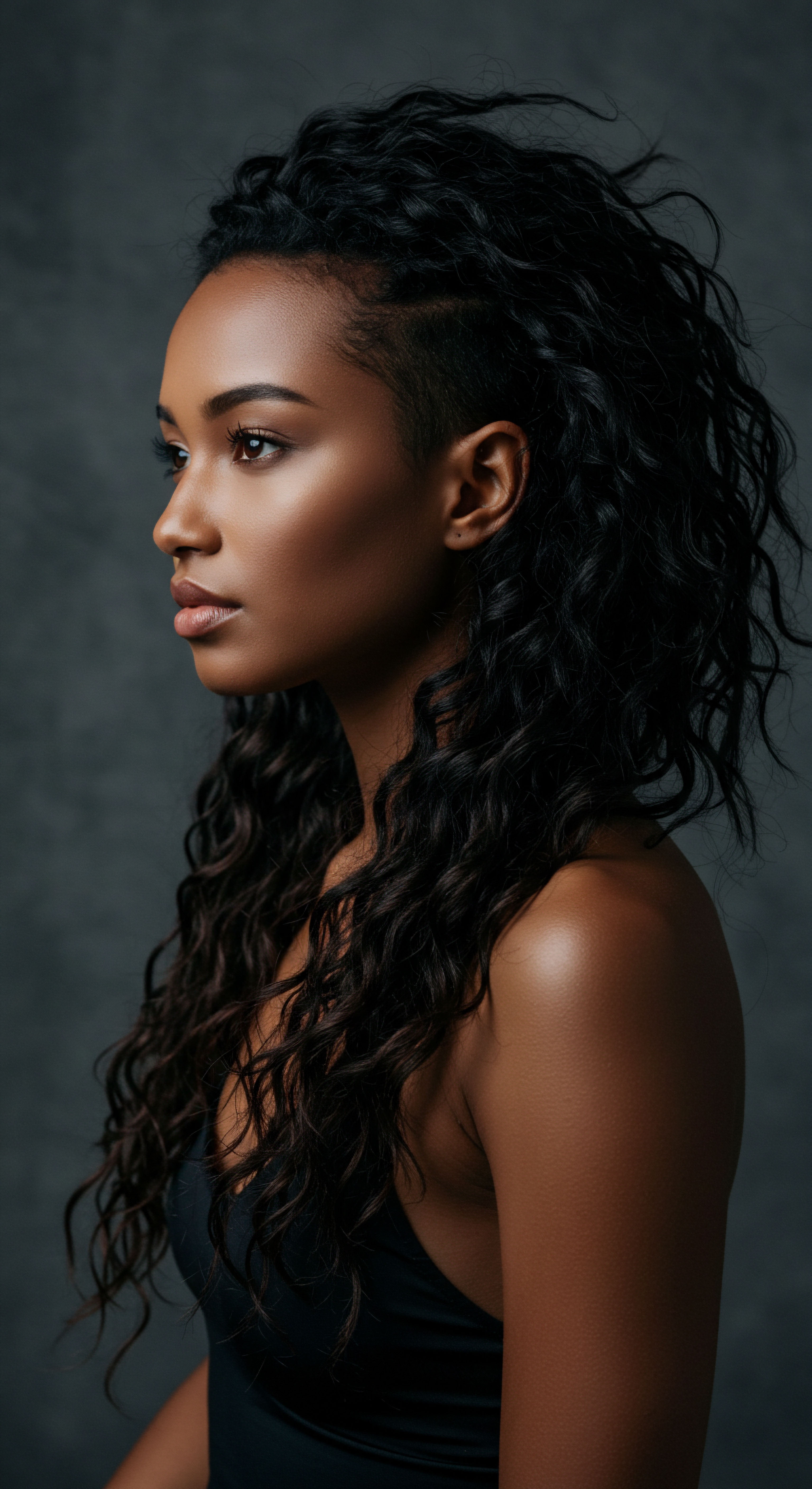
Natural Styling and Definition Techniques
Beyond protective styles, the realm of natural styling celebrates the inherent beauty of textured hair in its unadorned state. Techniques aim to enhance the hair’s natural curl pattern, offering definition, volume, and shine. The Wash-And-Go, a popular method, involves cleansing, conditioning, and applying styling products to wet hair, allowing curls to air dry or diffuse into their natural formation. This technique showcases the hair’s true texture, requiring products that provide moisture and hold without stiffness.
Other methods, such as Coil Outs, Twist Outs, and Braid Outs, involve setting damp hair in specific patterns to create a defined curl or wave when unraveled. These techniques allow for artistic expression, yielding diverse results from soft waves to bouncy spirals. The choice of product—from hydrating creams to light gels—plays a pivotal role in achieving the desired outcome, ensuring the hair remains soft, pliable, and free from unwanted residue. The artistry in these techniques lies in understanding the hair’s unique response to moisture and product, transforming daily styling into an intimate dialogue with one’s strands.
Hair rituals, far from being mere vanity, are deliberate acts of self-care and cultural affirmation, reflecting a deep connection to one’s heritage and well-being.

Wigs and Hair Extensions Mastery
Wigs and hair extensions offer incredible versatility and creative freedom, allowing for dramatic transformations without altering one’s natural hair. They serve various purposes ❉ some use them for protective styling, shielding their natural hair from manipulation or environmental exposure. Others embrace them for fashion, experimenting with different lengths, colors, and textures. The mastery of wigs and extensions lies in selecting high-quality pieces that blend seamlessly and ensuring proper installation and maintenance to preserve both the artificial hair and the natural hair underneath.
From human hair wigs that can be styled with heat, to synthetic options offering a wide array of pre-styled looks, the choices are vast. Similarly, extensions can be applied through various methods, including sew-ins, clip-ins, and tape-ins, each with its own application process and care requirements. Understanding the distinctions and appropriate techniques is key to a comfortable and healthy experience. This realm allows for personal expression, offering a playful and transformative aspect to hair presentation.

Heat Styling and Thermal Reconditioning with a Safety-First Approach
While natural textures are celebrated, heat styling and thermal reconditioning remain part of the broader hair landscape. Tools like flat irons, curling wands, and blow dryers can temporarily alter hair texture, offering sleek or wavy finishes. Thermal reconditioning, a chemical process combined with heat, permanently straightens hair. When considering these methods, a safety-first approach is paramount, especially for textured hair, which is inherently more susceptible to heat damage due to its structural characteristics.
Using a Heat Protectant Spray is non-negotiable before any application of thermal tools, forming a barrier that mitigates damage. Opting for lower heat settings and minimizing frequency also safeguards the hair’s integrity. For thermal reconditioning, seeking experienced professionals who understand the specific needs of textured hair is vital to prevent irreversible damage. The allure of a different texture can be strong, yet protecting the hair’s long-term health should always guide these choices.

The Complete Textured Hair Toolkit
A well-equipped toolkit is essential for nurturing textured hair, comprising items that support its unique characteristics. The right tools can prevent breakage, enhance definition, and make styling a gentle, rewarding process. Here are some indispensable items:
- Wide-Tooth Comb ❉ Ideal for detangling wet or damp hair, minimizing breakage.
- Spray Bottle ❉ Perfect for dampening hair before applying products or styling, ensuring even distribution.
- Microfiber Towel or Old Cotton T-Shirt ❉ Gentle alternatives to terry cloth towels, reducing frizz and friction during drying.
- Satin or Silk Bonnet/scarf/pillowcase ❉ Protects hair at night by reducing friction and preserving moisture.
- Hair Clips and Ties (satin-Lined or Seamless) ❉ For sectioning hair during styling without snagging or causing dents.
Beyond these, a quality detangling brush, a diffuser attachment for blow dryers, and specialized product applicators can further enhance the care routine. The selection of tools reflects a thoughtful approach, acknowledging that each step in the hair care ritual contributes to the overall health and vitality of textured strands.

Relay
Moving into a more expansive view, we consider how the world beyond our personal rituals shapes our relationship with hair. The intricate dance between societal expectations and individual identity plays out profoundly in the realm of hair, especially for those whose natural textures have been historically marginalized. This deeper exploration invites us to consider the less apparent complexities, where cultural currents, scientific understanding, and deeply personal experiences converge, unveiling the profound impact of collective pressures on individual mental well-being.
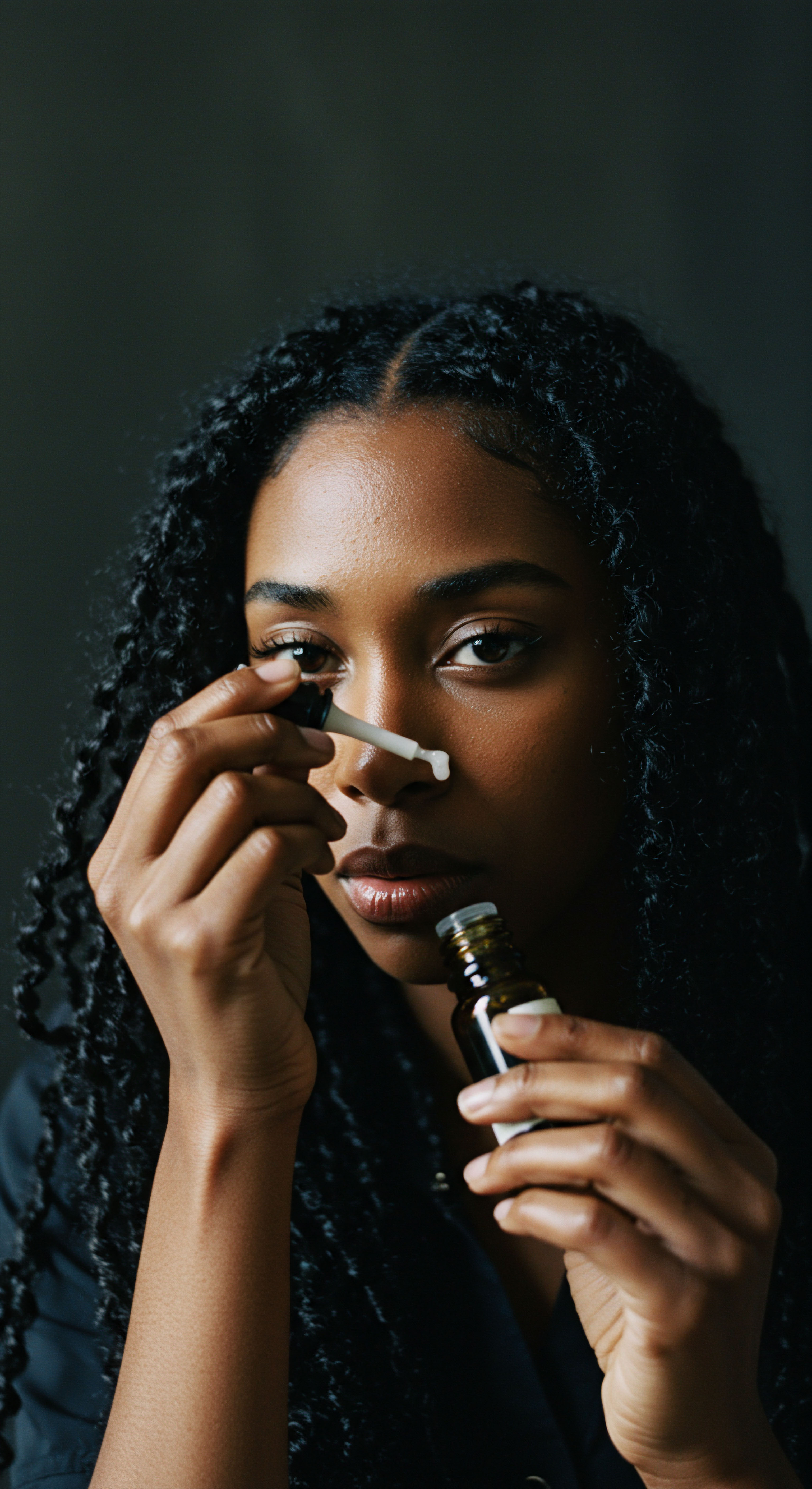
Historical Echoes and Present Realities of Hair Discrimination
The journey of textured hair through history is marked by enduring societal pressures, often rooted in colonial beauty standards that favored straight, Eurocentric hair. During periods like slavery, Black women were frequently compelled to cover their hair or adopt styles mimicking European norms, establishing a hierarchy where natural Black hair was deemed “unprofessional” or “unmanageable.” This historical context created a lasting legacy, shaping perceptions and practices for generations. Even today, the echoes of these historical biases persist, manifesting as hair discrimination in various settings. Individuals with natural hair, including afros, locs, braids, or twists, frequently face negative biases in schools and workplaces.
Such discrimination is not merely about aesthetics; it carries profound psychological weight. The constant scrutiny and the pressure to conform can lead to heightened stress, anxiety, and a diminished sense of self-worth. The need to alter one’s natural appearance to “fit in” for job interviews or in professional environments places an additional, unnecessary burden on Black individuals, affecting their ability to perform optimally and contributing to feelings of inadequacy. This ongoing experience of bias, sometimes subtle, sometimes overt, becomes an “esthetic trauma,” impacting mental health in ways parallel to other recognized traumatic events.

Can Hair Bias Seriously Affect Self-Esteem and Identity?
The direct connection between hair and self-esteem for individuals with textured hair is well-documented. Hair is deeply intertwined with identity, self-image, and perceptions of beauty. When societal messages repeatedly devalue natural hair, individuals, particularly young Black girls, can internalize these negative stereotypes, leading to a complex relationship with their own hair and a questioning of their inherent beauty.
A study involving college-attending Black women found that negative comments about hair from supervisors were specifically linked to lower hair self-esteem. This highlights how external perceptions, particularly from figures of authority, can directly erode an individual’s confidence in their natural appearance. The desire to avoid discrimination can lead some to style their hair against their natural preferences, or even use chemical straighteners, often at significant personal cost, including physical damage and psychological distress.
The CROWN Act (Creating a Respectful and Open World for Natural Hair) , which prohibits discrimination based on hair texture and protective hairstyles, represents a significant legislative step towards dismantling these biases. Its existence underscores the severity of the problem, acknowledging that hair is a protected racial characteristic and that discrimination based on it has tangible, negative impacts on individuals’ lives and opportunities. Despite such legislative efforts, the societal shift in attitudes remains a work in progress, with biases sometimes persisting even in remote work environments, where appearance expectations can still influence perceptions during video calls or performance evaluations.

The Surprising Resurgence of Chemical Relaxers and Its Complexities
Amidst the natural hair movement, a curious phenomenon has recently emerged ❉ a resurgence in the use of chemical hair relaxers, particularly visible on social media platforms like TikTok. This trend presents a complex challenge to mental well-being, as it brings to the forefront the enduring pressures to conform to certain beauty ideals, even when those ideals are associated with significant health risks. For decades, chemical straighteners have been linked to scalp damage, pain, and, more recently, serious health concerns.
A notable study, the Sister Study by the National Institutes of Environmental Health Sciences, found a correlation between frequent use of hair straightening products and a higher risk of uterine cancer. This research, involving over 33,000 women over nearly 11 years, identified 378 uterine cancer diagnoses among participants, with a clear link to chemical relaxer use. The study also highlighted that Black women, who use these products more frequently and often begin at earlier ages, may face a disproportionately higher risk. Beyond uterine cancer, links to breast and ovarian cancers, as well as endocrine disorders like fibroids (which disproportionately affect Black women), have also been reported.
The reasons for this return to relaxers are multifaceted. For some, the overwhelming time and financial commitment required for maintaining natural textured hair can be a significant burden. The perceived ease of chemically straightened hair, coupled with lingering societal expectations, can make relaxers seem like a practical solution. This situation presents a poignant dilemma ❉ the desire for ease and social acceptance conflicting with the knowledge of potential health consequences.
The mental toll of this internal conflict, coupled with the physical risks, highlights the deep, often unseen, ways societal pressures can influence personal choices and well-being. It reveals a landscape where individuals navigate a complex array of factors, from personal preference to systemic bias, in their hair journeys.
| Impact Category Psychological Distress |
| Manifestations Heightened stress, anxiety, diminished self-confidence, lower self-esteem, identity conflict. |
| Source References |
| Impact Category Social Consequences |
| Manifestations Social ostracization, limited networking opportunities, feelings of otherness, pressure to conform. |
| Source References |
| Impact Category Professional Barriers |
| Manifestations Missed promotions, unemployment, pressure to alter appearance for job interviews, lower job satisfaction. |
| Source References |
| Impact Category Physical Health Links |
| Manifestations Stress-related hair loss, scalp conditions, increased risk of certain cancers from chemical straighteners. |
| Source References |
| Impact Category Societal hair bias contributes to a range of adverse mental and physical health outcomes, particularly for Black individuals. |

Understanding Hair as a Cultural Marker and Its Mental Impact
For many cultures, hair transcends its biological function, serving as a powerful cultural marker, a symbol of identity, status, and heritage. For Black communities, hair holds a particularly profound place, acting as a “living archive of identity, culture, and resilience.” Traditional African hairstyles communicated tribal affiliation, social standing, and even historical narratives. This deep cultural significance means that when hair is judged or discriminated against, it strikes at the core of an individual’s heritage and sense of self. The “Black is Beautiful” movement of the 1960s, for example, politicized natural hair as a form of self-acceptance and protest, directly challenging Eurocentric beauty norms.
The constant negotiation of this legacy in a society often shaped by dominant beauty standards takes a mental toll. The experience of microaggressions related to hair—subtle yet persistent slights—contributes to chronic stress and can lead to internalized racism. This can manifest as anxiety about how one’s hair is perceived, a sense of cultural disconnection, and even grief or depression related to hair loss, whether from stress, illness, or damaging practices.
The natural hair movement of the early 2000s and its current iteration serve as powerful counter-narratives, encouraging self-acceptance and the celebration of diverse textures. This movement highlights the idea that freely wearing one’s natural hair, without feeling compelled to conform, is a deeply personal and often political act. It underscores the psychological benefits of embracing one’s authentic self, moving away from external validation and towards internal affirmation. This shift contributes to a more positive self-image and a stronger sense of belonging within one’s cultural community.
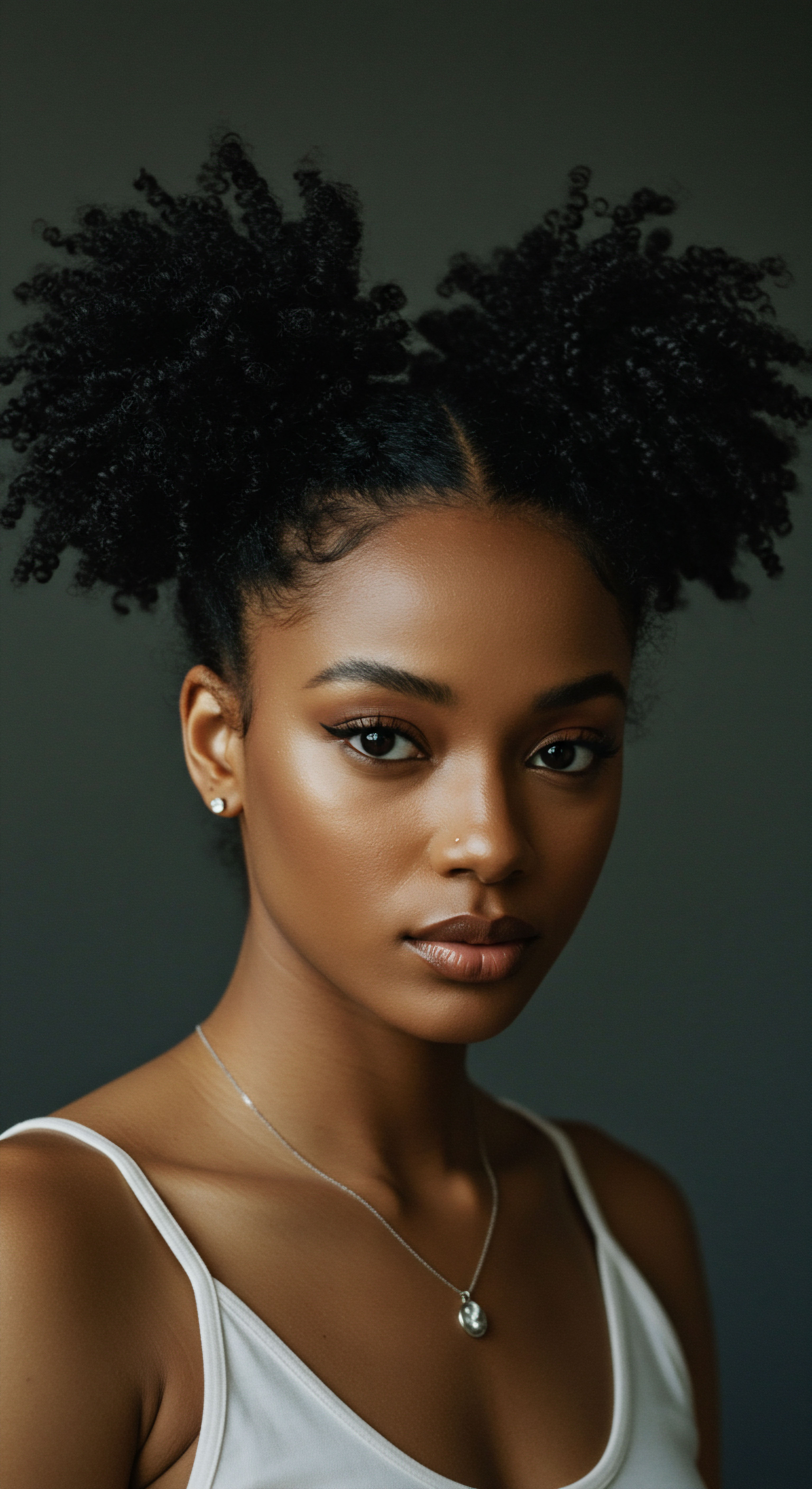
How Do Social Environments Shape Hair Related Mental Health?
The various social environments an individual navigates profoundly influence their hair-related mental well-being. From school hallways to corporate boardrooms, unspoken rules and overt policies often dictate what is considered “acceptable” hair. In educational settings, school appearance policies and dress codes have historically targeted Afrocentric hairstyles, leading to disciplinary actions, social ostracization, and psychological distress for Black students. The impact of childhood bullying related to hair can persist well into adulthood, affecting self-esteem and self-identity.
In professional spaces, individuals with textured hair frequently face scrutiny and bias. A study on natural hair bias in job recruitment found that Black women with natural hairstyles were perceived as less professional, less competent, and less likely to be recommended for an interview compared to those with straightened hair or white women with any hair type. This bias contributes to economic disparities, limiting job opportunities and career advancement. The pressure to “code-switch” by altering one’s hair to align with perceived professional norms creates ongoing stress and anxiety.
Even within Black communities, internal biases related to hair texture, sometimes termed “texturism” or “colorism,” can create further psychological strain. Texturism refers to discrimination based on how closely an individual’s natural hair resembles European hair, with looser curls sometimes favored over tighter coils. These internalized hierarchies, a legacy of historical oppression, can lead to negative self-perception and division.
However, research suggests that embracing Blackness and resisting Eurocentric beauty standards can lead to higher self-esteem, acting as a buffer against stereotypical beliefs. Support systems, such as online blogs described as “hair therapy,” provide crucial informal support for those on their natural hair journeys, helping to mitigate the mental health effects of discrimination.
Ultimately, the health of our hair and our mental state are intricately connected. Stress, anxiety, and depression can manifest as hair shedding, thinning, and scalp conditions. Conversely, hair discrimination and the pressure to conform can trigger or exacerbate these mental health challenges, creating a feedback loop where societal pressures directly affect physical hair health. Addressing these pressures, therefore, is not merely about hair care; it is about promoting holistic well-being and affirming the diverse beauty of all individuals.
- Internalized Racism ❉ When individuals from marginalized groups internalize negative stereotypes about their own racial group, often leading to self-doubt and self-criticism regarding their appearance, including hair.
- Esthetic Trauma ❉ A term used by the Association of Black Psychologists to describe the severe mental health effects of hair discrimination, elevating it to the level of other recognized traumas.
- Code-Switching ❉ The act of altering one’s appearance, including hairstyle, to conform to dominant societal or professional norms, often to avoid discrimination or enhance opportunities.

Reflection
As we consider the complex interplay between societal pressures and the deeply personal realm of hair, a quiet truth begins to settle. The strands that frame our faces are more than mere protein structures; they are carriers of history, markers of identity, and barometers of our inner landscape. The whispers of expectation, the echoes of historical bias, and the very real experiences of discrimination can indeed cast long shadows on mental well-being, shaping how we perceive ourselves and navigate the world. Yet, within this challenging terrain, a profound resilience shines through.
The growing movement towards self-acceptance, the reclamation of diverse hair textures, and the communal support found in shared journeys all speak to a powerful turning of the tide. It is a testament to the human spirit’s capacity to seek beauty and affirmation, not in external validation, but in the authentic expression of self. The conversation around hair, therefore, becomes a wider dialogue about belonging, respect, and the quiet strength found in embracing one’s true form, a gentle reminder that every coil, kink, and curl holds its own unique story, deserving of celebration and care.

References
- Byrd, A. & Tharps, L. (2014). Hair Story ❉ Untangling the Roots of Black Hair in America. St. Martin’s Griffin.
- Dabiri, E. (2020). Twisted ❉ The Tangled History of Black Hair Culture. Harper Perennial.
- Ellington, T. N. (2023). Black Hair in a White World. The Kent State University Press.
- Jafferany, M. & Patel, A. (2020). Trichopsychodermatology ❉ the psychiatric and psychosocial aspects of hair disorders. Dermatologic Therapy, 33(1), e13168.
- Johnson, T. & Bankhead, T. (2014). Hair It Is ❉ Examining the Experiences of Black Women with Natural Hair. Open Journal of Social Sciences, 2(10), 86-100.
- Koval, C. Z. & Rosette, A. S. (2020). Hair penalties ❉ the negative influence of Afrocentric hair on ratings of Black women’s dominance and professionalism. Organizational Behavior and Human Decision Processes, 158, 46-59.
- Perkins, R. M. (2015). The Influence of Colorism and Hair Texture Bias on the Professional and Social Lives of Black Women Student Affairs Professionals. Louisiana State University and Agricultural and Mechanical College.
- Rudnicka, L. Olszewska, M. & Rakowska, A. (2012). Atlas of Trichoscopy ❉ Dermoscopy in Hair and Scalp Disease. Springer.
- Hussett-Richardson, S. (2023). The Development Of A Self-Esteem Toolkit For Black Adolescent Girls Centering Hair As A Tool For Empowerment. EliScholar – A Digital Platform for Scholarly Publishing at Yale.
- Dove, L. M. (2021). The Influence of Colorism on the Hair Experiences of African American Female Adolescents. Genealogy, 5(1), 14.